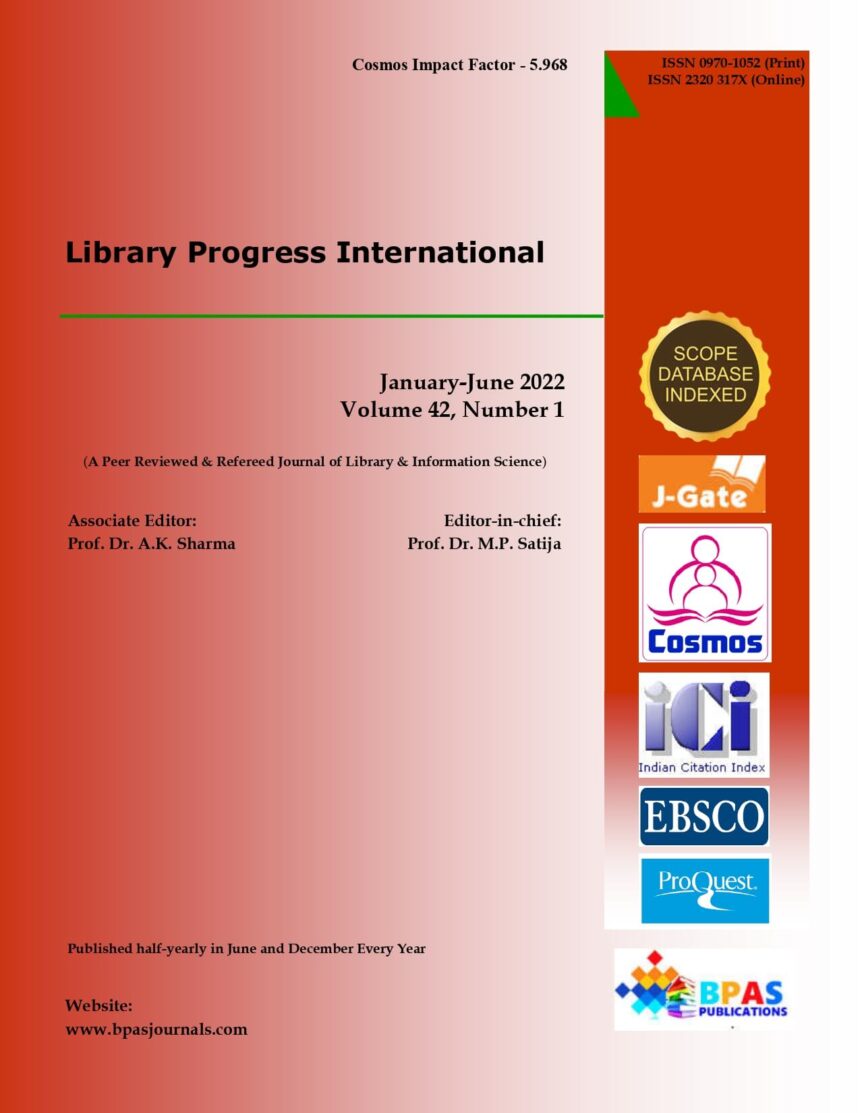Acquisition Policy in Libraries of Higher Educational Institutions: A Comprehensive Literature Review
DOI:
https://doi.org/10.48165/Keywords:
Acquisition, Library, factors, literature, review, NVivoAbstract
The concern and procedure of acquisition are significant components in the various phases of information spreading. The relevant resources are procured in the library for usage by the users. The acquisition process has witnessed a drastic change in recent times due to various digitalization issues, financial disruptions, various delivery modes, etc. There is a difference in the library officers' selection of resources based on their knowledge and experience. The present research work aims to determine the various researches done in the acquisition area and higher education libraries. The literature review was done from reputed databases like Taylor and Francis, Emerald and Web of Science, and then a Prisma model was developed for better results. NVivo was used to understand the literature gap using the words cloud and treemap. The study concludes that the literature gap is in relative worth of higher education libraries' factors influencing acquisition.
Downloads
References
Atherton, P. (1968). Evaluation of the Retrieval of Nuclear Science Document References Using the Universal Decimal Classification as the Indexing Language for a Computer-Based System.
Benny L (2015) Selection and acquisition of e-resources in academic libraries: Challenges. International Journal of Digital Library Services (IJODLS) 5(2): 1–14.
Copeland AHO (2013) Collection management and the budget crunch: Are we adequately preparing library students for current practices? Collection Building 32(4): 128–132.
Dorner, D. G., & Curtis, A. (2004). A comparative review of common user interface products. Library Hi-Tech.
Dubey, R., Gunasekaran, A., Childe, S. J., Papadopoulos, T., &FossoWamba, S. (2017). World class sustainable supply chain management: Critical review and further research directions. The International Journal of Logistics Management, 28(2), 332– 362.https://doi.org/10.1108/IJLM-07-
-0112
Edelman, Hendrik. (1979)'Selection Methodology in Academic Libraries," Library Resources and Technical Services, 63 (Winter 1979), 33-34.
Evans, N., & Michalak, T. (1987). Delivering Reference Information Through a Campus Network: Carnegie Mellon's Library Information System. Reference Services Review.
Fombad M and Mutula FM (2003) Collection development practices at the University of Botswana Library (UBL). Malaysian Journal of Library and Information Science 8(1): 65–76.
Gupta, S., Altay, N., & Luo, Z. (2017). Big data in humanitarian supply chain management: A review and further research directions. Annals of Operations Research,283(1–2), 1153–
https://doi.org/10.1007/s10479-017- 2671-4
Herlihy, C. S., & Yi, H. (2010). E‐books in academic libraries: how does currency affect usage? New Library World.
Holden, j. (2010), Acquisitions in the New Information Universe: Core Competencies and Ethical Practices, Neal-Schuman Publishers, New York, NY.
Holloway, K.L. (2003), "Developing core and mastery-level competencies for librarians," Library Administration & Management, Vol. 17 No. 2, pp. 94-8.
Jalal KS and Mohan VV (2011) Collection Development in Digital Environment: A Case Study. Hyderabad, India: Osmania University.
Leach, M. R. (2008). Collection development competencies for science and technology libraries. Science & Technology Libraries, 28(1-2), 11-22.
Mangrum S and Pozzebon ME (2012) Use of collection development policies in electronic resources management. Collection Building 31(3): 8–16.
Negrete, M. D. C. (1993). El papel del bibliotecólogo en el desarrollo de colecciones en la biblioteca universitaria. Investigación Bibliotecológica: archivonomía, bibliotecología e información, 7(14).
Osburn, C. B. (1979). Academic research and library resources: Changing patterns in America (Vol. 3). Westport, Conn.: Greenwood Press.
Sami C, Tuglu A and Gurdal G (2013) New electronic resources management system for the ANKOS consortium. Journal of Academic Librarianship 39(6): 589–595.
Sasikala C, Nagaratnamani G and Dhanraju V (2014) Pattern of collection development in academic libraries in Andhra Pradesh: A study. IOSR Journal of Humanities and Social Science (IOSR-JHSS) 19(2): 5–18.
Thirumagal A and Bremala P (2015) A Study on Developing Awareness on Access of e-resources through N-LIST among the researchers of Arts Colleges Affiliated to Manonmaniam Sundaranar University, Tamil Nadu. Asian Journal of Information Science and Technology 4(1): 1–4.
Tjoumas, R. (1993). Native American literature for young people: A survey of collection development methods in public libraries.
Van Zijl, C. (1998). The why, what, and how of collection development policies. S. Afr. J Libr. lnf. Sci, 66(3), 99-106.
Vignau, J. (1999). Réseaux, filières. Information psychiatrique, 75(1), 41- 43.
Vignau, B. S. S., & Meneses, G. (2005). Collection development policies in university libraries: a space for reflection. Collection building, 24(1), 35-43.
Wertz, F. J. (2011). Five ways of doing qualitative analysis: Phenomenological psychology, grounded theory, discourse analysis, narrative research, and intuitive inquiry. Guilford Press.
Yoon, H. Y., & Kim, S. Y. (2016). A Study of Collection Development Policy to Strengthen South Korea's Library Services for Persons with Disabilities. Canadian Journal of Information and Library Science, 40(2), 162-185.

